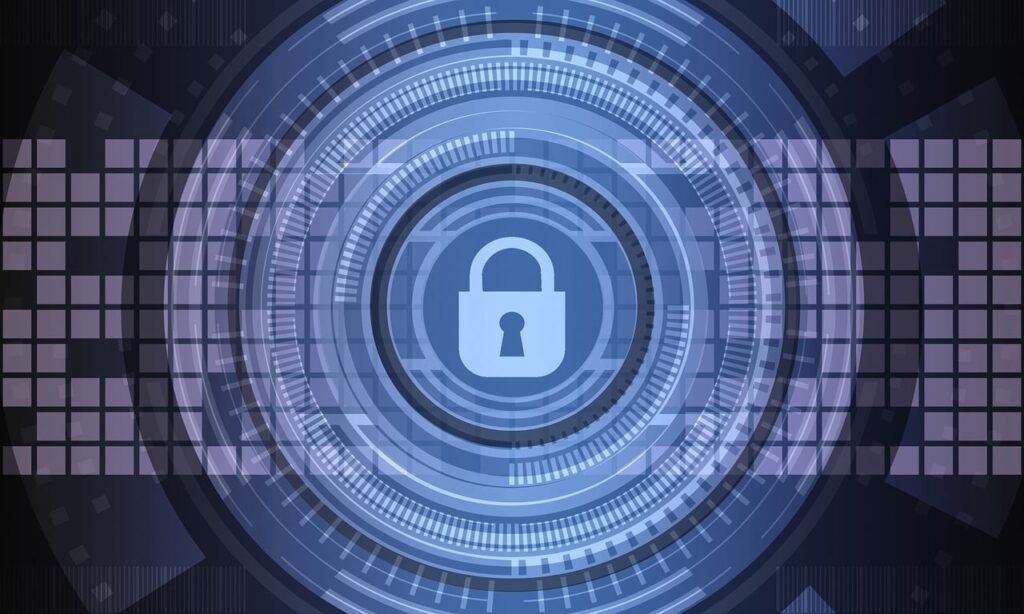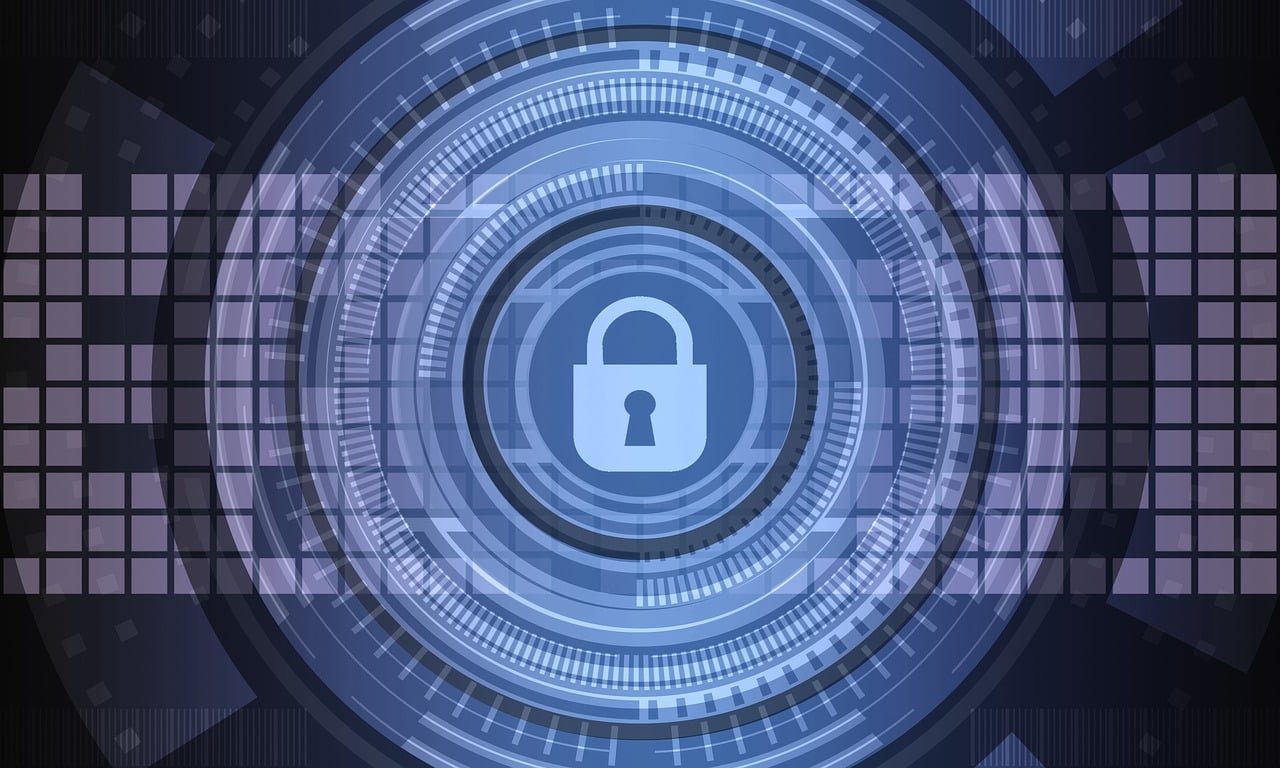Imagine never having to worry about the security of your home or office again. With advanced locking mechanisms, you can now breathe a sigh of relief knowing that your valuable belongings are safe and secure. These cutting-edge technologies are designed to provide maximum security, using innovative features that make traditional locks pale in comparison. From biometric locks that recognize your unique fingerprint to smart locks that can be controlled from your smartphone, the possibilities are endless. In this article, we will explore the world of advanced locking mechanisms and discover how they can enhance the security of your space, giving you ultimate peace of mind.

This image is property of pixabay.com.
Biometric Locks
Biometric locks are innovative security mechanisms that use unique physical and behavioral characteristics to grant access. One of the most common forms of biometric locks is fingerprint recognition. This technology scans and analyzes an individual’s fingerprint, matching it with pre-stored data for identification. With this system, you no longer have to fumble for keys or remember combinations; your fingerprint becomes your key.
Another type of biometric lock is retina scan technology. By using infrared light to capture the unique patterns in your eye, retina scan locks provide an additional layer of security. The intricate details of your retina make it practically impossible to replicate, ensuring only authorized individuals can gain access.
Voice recognition is yet another form of biometric lock that has gained popularity in recent years. By analyzing a person’s vocal characteristics, including pitch, tone, and pronunciation, the system confirms their identity and grants access accordingly. With voice recognition, you can unlock doors simply by speaking a predetermined phrase or password.
Smart Home Integration
Integrating your locks with your smart home system has become increasingly popular among homeowners seeking enhanced security. By connecting your locks to your security system, you can enjoy the convenience of controlling your locks remotely while also improving the overall security of your home.
One of the key advantages of integrating your locks with your security system is the ability to remotely lock and unlock your doors. Whether you forgot to lock up before leaving or need to grant access to a trusted individual, you can effortlessly control your locks from anywhere using your mobile device. This feature provides peace of mind and eliminates the need for spare keys or worrying about misplaced keys.
Another benefit of smart home integration is access control via mobile devices. With this feature, you can grant temporary or permanent access to family, friends, or service providers, all from the convenience of your smartphone or tablet. This eliminates the need for physical keys and allows you to easily manage who has access to your home at any given time.

This image is property of pixabay.com.
Keyless Entry
Say goodbye to carrying around bulky keychains and hello to the convenience of keyless entry systems. These sophisticated locking mechanisms utilize cutting-edge technology to provide seamless access control without the need for traditional keys.
Bluetooth enabled locks are one of the most popular forms of keyless entry systems. By connecting to your mobile device via Bluetooth, these locks automatically unlock as you approach, providing a truly hands-free experience. Bluetooth enabled locks also offer convenient features such as auto-locking when you leave the vicinity, ensuring your home is always secure.
Numeric keypad locks offer an alternative keyless entry solution. With these locks, you can enter a unique code on a keypad to gain access. This eliminates the need for physical keys and allows multiple individuals to have their own personalized entry code. Numeric keypad locks also offer the flexibility of changing codes whenever necessary, providing an added layer of security.
For those who prefer a card-based access control system, proximity card locks are an excellent choice. These locks utilize radio frequency identification (RFID) technology to grant access to individuals with authorized cards. The cards can be easily programmed and deactivated, making it simple to manage access to your home.
Tamper-Proof Technology
When it comes to securing your home, tamper-proof technology is essential. This technology encompasses a range of features designed to deter and protect against unauthorized access attempts.
Advanced alarm systems are a crucial component of tamper-proof technology. These systems can detect any unauthorized entry attempts, triggering a loud alarm and notifying both the homeowner and the security monitoring center. The combination of audible and visual alarms often serves as an effective deterrent to potential intruders.
Anti-drill features are another vital aspect of tamper-proof technology. These features are specifically designed to prevent drilling attacks, which are a common method used by criminals to bypass conventional locks. Anti-drill features include hardened steel plates and pins that resist drilling, ensuring your locks remain secure even in the face of determined attackers.
Reinforced metal construction is yet another line of defense against tampering. High-quality locks made from durable materials such as solid brass or hardened steel provide increased resistance to physical attacks. The strength and durability of these locks make them highly resistant to forced entry and add an extra layer of protection for your home.

This image is property of pixabay.com.
Advanced Encryption
In an increasingly interconnected world, protecting your sensitive data is paramount. Advanced encryption plays a crucial role in safeguarding your personal information and ensuring secure communication between your locks and your smart home system.
Secure data transmission is a fundamental aspect of advanced encryption. By utilizing encryption algorithms, your lock’s communication with your smart home system is encrypted, preventing unauthorized interception or tampering. This ensures that any sensitive information transmitted between your lock and your smart home system remains confidential.
Digital key authentication is another vital component of advanced encryption. By employing cryptographic techniques, digital keys are authenticated to ensure they can only be accessed by authorized parties. This prevents the replication or misuse of digital keys, further enhancing the security of your locking system.
Firmware updates also play a significant role in ensuring the security of advanced locking mechanisms. Manufacturers regularly release firmware updates that address any potential vulnerabilities and enhance the security features of the locks. By regularly updating the firmware on your locks, you can ensure that you are benefiting from the latest security enhancements and staying protected against emerging threats.
Multi-Factor Authentication
For maximum security, multi-factor authentication combines multiple layers of verification to confirm the identity of individuals seeking access to your home. By utilizing a combination of different forms of authentication, multi-factor authentication significantly strengthens the overall security of your locking system.
Combining biometrics and a PIN is a common example of multi-factor authentication. In addition to scanning a fingerprint or retina, the system also requires the individual to enter a unique PIN. This ensures that even if someone were to obtain unauthorized access to another person’s biometric data, they would still need the corresponding PIN to gain entry.
Token-based verification is another form of multi-factor authentication. In this system, individuals are required to possess a physical token, such as an access card or a USB dongle, in addition to providing other forms of authentication. This adds an extra layer of security by requiring the physical presence of the token, preventing virtual or remote access attempts.
Two-factor authentication is a widely adopted method of multi-factor authentication. With this approach, individuals are required to provide two different forms of authentication, such as a fingerprint scan and a unique code sent to their mobile device. By combining two distinct factors, the system ensures that only authorized individuals can gain access.
Remote Monitoring and Control
Remote monitoring and control capabilities allow you to stay connected and in control of your home security regardless of your location. With real-time alerts and the ability to remotely lock and unlock your doors, you can enjoy peace of mind and convenience like never before.
Real-time alerts provide instant notifications of any security events or suspicious activities. Whether it’s an unauthorized entry attempt or a forgotten door left unlocked, you receive immediate alerts on your mobile device. This allows you to take swift action and address any potential security issues before they escalate.
Lock status monitoring is another valuable feature of remote monitoring and control. Using your smart home app or web portal, you can quickly check the status of your locks, ensuring they are properly secured at all times. This feature is particularly useful if you frequently find yourself wondering whether you remembered to lock the door before leaving home.
The ability to remotely lock and unlock your doors offers unparalleled convenience and flexibility. Whether you need to grant access to a visitor, a service provider, or a trusted family member, you can easily do so from the palm of your hand. You no longer have to rush home or worry about leaving spare keys under the mat; remote locking and unlocking put you in control.
Anti-Picking Mechanisms
Picking locks is one of the most common methods employed by burglars and intruders. To counter this threat, advanced locking mechanisms incorporate anti-picking features that render traditional lock-picking techniques ineffective.
Tubular locks are specifically designed to resist picking attempts. Instead of the traditional pin-and-tumbler mechanism, tubular locks utilize a circular keyway with multiple smaller pins. This design makes it significantly more challenging for a would-be intruder to manipulate the lock using traditional picking tools.
Disc detainer locks are another highly secure anti-picking mechanism. These locks use rotating discs instead of traditional pins, making them extremely resistant to picking. The interaction between the discs and the key requires precise alignment, making it virtually impossible for a standard picking tool to manipulate the lock.
Pin tumbler locks, while more common than tubular and disc detainer locks, can still incorporate anti-picking features to enhance security. Graded pins and specialized security pins such as spool and mushroom pins are used to increase complexity and resist picking attempts. These additional measures make pin tumbler locks significantly harder to pick compared to standard locks.
Fire and Intrusion Resistance
Beyond simply protecting against unauthorized access, advanced locking mechanisms also prioritize fire and intrusion resistance. These features are crucial to ensuring the safety and security of your home and its occupants.
Fireproof materials are a critical component of locks designed to withstand high temperatures. By using fire-resistant materials such as stainless steel or high-temperature alloys, these locks can resist heat and prevent damage even in the event of a fire. This not only protects your home and belongings but also allows for safe evacuation in emergency situations.
Reinforced bolts provide an added layer of protection against intrusion attempts. These bolts are longer, stronger, and harder to manipulate compared to standard bolts. This makes it significantly more difficult for an intruder to force or pry open the door, ensuring that your home remains secure against determined attackers.
Burglar alarm integration is an essential fire and intrusion resistance feature. By connecting your locks to a burglar alarm system, you create a comprehensive security solution that combines physical deterrents with professional monitoring. In the event of a breach or attempted break-in, the alarm system is triggered, alerting you and the monitoring center. This immediate response helps deter intruders and increases the chances of a swift apprehension.
Smart Lock Audit Trail
Monitoring and analyzing lock activity is essential for effectively managing the security of your home. Smart lock audit trail features provide a comprehensive record of all lock-related events, allowing you to track access events, identify security breaches, and ensure accountability.
Recording lock activity in an audit trail allows you to keep a detailed log of who accessed your home and when. This can be especially useful if you suspect unauthorized access or if there is a security incident. By reviewing the activity log, you can accurately identify the individuals who accessed your home and determine whether any suspicious behavior occurred.
Tracking access events also enables you to monitor and manage access permissions for individuals with authorized entry. By identifying patterns and trends in access, you can make informed decisions about granting or revoking access rights. This feature is particularly valuable for managing temporary access for service providers or guests, ensuring that access is restricted to specific time frames.
Analyzing security breaches is another critical aspect of a smart lock audit trail. By reviewing the activity log, you can pinpoint any unusual or suspicious events and take appropriate action. Whether it’s changing access codes or escalating security measures, analyzing security breaches helps you maintain a high level of security for your home.
In conclusion, advanced locking mechanisms offer a myriad of features and technologies that enhance security and provide peace of mind for homeowners. From biometric locks to smart home integration, keyless entry, tamper-proof technology, advanced encryption, multi-factor authentication, remote monitoring and control, anti-picking mechanisms, fire and intrusion resistance, and smart lock audit trail, these advanced security solutions ensure that your home remains safe and secure. By embracing these technological advancements, you can fortify the security of your home and protect what matters most.
